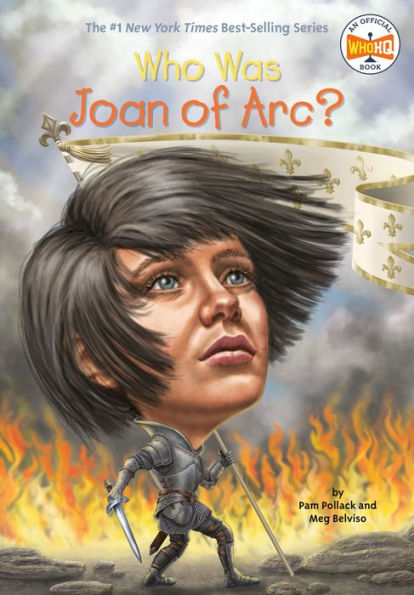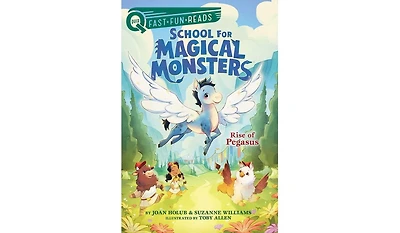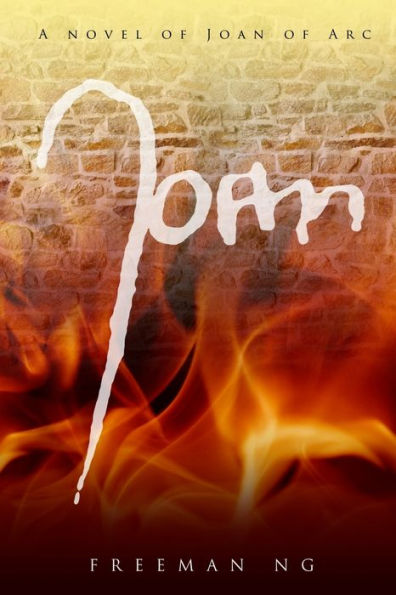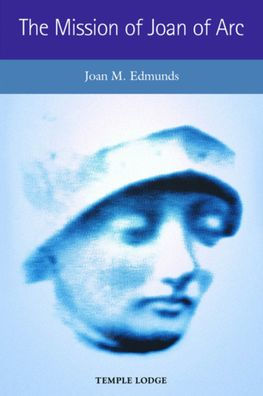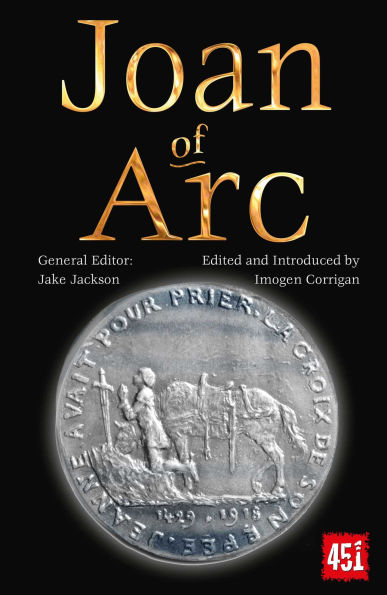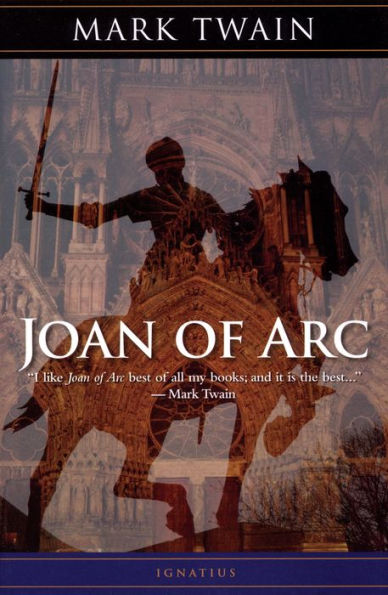Home
Joan
Barnes and Noble
Loading Inventory...
Joan in Bloomington, MN
Current price: $9.99

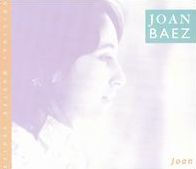
Joan in Bloomington, MN
Current price: $9.99
Loading Inventory...
Size: OS
Joan
was very much an album of its time in terms of its sound and production, more so than any other album that
Joan Baez
ever recorded. In 1967,
rock
,
folk
folk-rock
, and
pop
all seemed to be headed in new and ever-more-ornate directions, and
was a response to that change and, not coincidentally, is also the most self-consciously beautiful record that
Baez
ever cut. Arranger/conductor
Peter Schickele
, who had previously worked with
on her
Christmas
album, provides generally restrained orchestral accompaniment on ten of the 12 songs here. The latter, in sharp contrast to
's earlier work, are mostly drawn from a wide range of such popular composers as
John Lennon
and
Paul McCartney
Donovan
Paul Simon
Jacques Brel
, as well as
Tim Hardin
's late brother-in-law,
Richard Farina
. Several of these tracks --
"Turquoise"
with its gorgeous parts for the harps and the horns,
"Children of Darkness"
with its beautiful writing for the reeds, and
"Saigon Bride"
with its haunting brass part -- are profoundly beautiful. Others, such as
"Eleanor Rigby"
"Dangling Conversation,"
don't come off nearly as well, in part because they're competing against fairly ornate originals and also -- in the case of the
song -- because of
's decision to alter the words. If
has one unfortunate attribute, it lies in the singer's
Sinatra
-like tendency to alter the lyrics of the songs that she's chosen to cover, if only by a single word ("is the theater really dead" becomes "is the church really dead," for no reason that anyone but the singer has ever been able to fathom); that and her overly strident singing (mated to an overly strident brass-laden arrangement) of
's
"La Colombe"
constitute the low point of this otherwise very fine album. Additionally,
shows off the two earliest-published products of her career as a songwriter, in the form of
"North"
"Saigon Bride,"
the latter a particularly poignant anti-war song that expresses the futility of the Vietnam War about as well as anything this side of
Phil Ochs
'
"White Boots Marching in a Yellow Land."
~ Bruce Eder
was very much an album of its time in terms of its sound and production, more so than any other album that
Joan Baez
ever recorded. In 1967,
rock
,
folk
folk-rock
, and
pop
all seemed to be headed in new and ever-more-ornate directions, and
was a response to that change and, not coincidentally, is also the most self-consciously beautiful record that
Baez
ever cut. Arranger/conductor
Peter Schickele
, who had previously worked with
on her
Christmas
album, provides generally restrained orchestral accompaniment on ten of the 12 songs here. The latter, in sharp contrast to
's earlier work, are mostly drawn from a wide range of such popular composers as
John Lennon
and
Paul McCartney
Donovan
Paul Simon
Jacques Brel
, as well as
Tim Hardin
's late brother-in-law,
Richard Farina
. Several of these tracks --
"Turquoise"
with its gorgeous parts for the harps and the horns,
"Children of Darkness"
with its beautiful writing for the reeds, and
"Saigon Bride"
with its haunting brass part -- are profoundly beautiful. Others, such as
"Eleanor Rigby"
"Dangling Conversation,"
don't come off nearly as well, in part because they're competing against fairly ornate originals and also -- in the case of the
song -- because of
's decision to alter the words. If
has one unfortunate attribute, it lies in the singer's
Sinatra
-like tendency to alter the lyrics of the songs that she's chosen to cover, if only by a single word ("is the theater really dead" becomes "is the church really dead," for no reason that anyone but the singer has ever been able to fathom); that and her overly strident singing (mated to an overly strident brass-laden arrangement) of
's
"La Colombe"
constitute the low point of this otherwise very fine album. Additionally,
shows off the two earliest-published products of her career as a songwriter, in the form of
"North"
"Saigon Bride,"
the latter a particularly poignant anti-war song that expresses the futility of the Vietnam War about as well as anything this side of
Phil Ochs
'
"White Boots Marching in a Yellow Land."
~ Bruce Eder
Joan
was very much an album of its time in terms of its sound and production, more so than any other album that
Joan Baez
ever recorded. In 1967,
rock
,
folk
folk-rock
, and
pop
all seemed to be headed in new and ever-more-ornate directions, and
was a response to that change and, not coincidentally, is also the most self-consciously beautiful record that
Baez
ever cut. Arranger/conductor
Peter Schickele
, who had previously worked with
on her
Christmas
album, provides generally restrained orchestral accompaniment on ten of the 12 songs here. The latter, in sharp contrast to
's earlier work, are mostly drawn from a wide range of such popular composers as
John Lennon
and
Paul McCartney
Donovan
Paul Simon
Jacques Brel
, as well as
Tim Hardin
's late brother-in-law,
Richard Farina
. Several of these tracks --
"Turquoise"
with its gorgeous parts for the harps and the horns,
"Children of Darkness"
with its beautiful writing for the reeds, and
"Saigon Bride"
with its haunting brass part -- are profoundly beautiful. Others, such as
"Eleanor Rigby"
"Dangling Conversation,"
don't come off nearly as well, in part because they're competing against fairly ornate originals and also -- in the case of the
song -- because of
's decision to alter the words. If
has one unfortunate attribute, it lies in the singer's
Sinatra
-like tendency to alter the lyrics of the songs that she's chosen to cover, if only by a single word ("is the theater really dead" becomes "is the church really dead," for no reason that anyone but the singer has ever been able to fathom); that and her overly strident singing (mated to an overly strident brass-laden arrangement) of
's
"La Colombe"
constitute the low point of this otherwise very fine album. Additionally,
shows off the two earliest-published products of her career as a songwriter, in the form of
"North"
"Saigon Bride,"
the latter a particularly poignant anti-war song that expresses the futility of the Vietnam War about as well as anything this side of
Phil Ochs
'
"White Boots Marching in a Yellow Land."
~ Bruce Eder
was very much an album of its time in terms of its sound and production, more so than any other album that
Joan Baez
ever recorded. In 1967,
rock
,
folk
folk-rock
, and
pop
all seemed to be headed in new and ever-more-ornate directions, and
was a response to that change and, not coincidentally, is also the most self-consciously beautiful record that
Baez
ever cut. Arranger/conductor
Peter Schickele
, who had previously worked with
on her
Christmas
album, provides generally restrained orchestral accompaniment on ten of the 12 songs here. The latter, in sharp contrast to
's earlier work, are mostly drawn from a wide range of such popular composers as
John Lennon
and
Paul McCartney
Donovan
Paul Simon
Jacques Brel
, as well as
Tim Hardin
's late brother-in-law,
Richard Farina
. Several of these tracks --
"Turquoise"
with its gorgeous parts for the harps and the horns,
"Children of Darkness"
with its beautiful writing for the reeds, and
"Saigon Bride"
with its haunting brass part -- are profoundly beautiful. Others, such as
"Eleanor Rigby"
"Dangling Conversation,"
don't come off nearly as well, in part because they're competing against fairly ornate originals and also -- in the case of the
song -- because of
's decision to alter the words. If
has one unfortunate attribute, it lies in the singer's
Sinatra
-like tendency to alter the lyrics of the songs that she's chosen to cover, if only by a single word ("is the theater really dead" becomes "is the church really dead," for no reason that anyone but the singer has ever been able to fathom); that and her overly strident singing (mated to an overly strident brass-laden arrangement) of
's
"La Colombe"
constitute the low point of this otherwise very fine album. Additionally,
shows off the two earliest-published products of her career as a songwriter, in the form of
"North"
"Saigon Bride,"
the latter a particularly poignant anti-war song that expresses the futility of the Vietnam War about as well as anything this side of
Phil Ochs
'
"White Boots Marching in a Yellow Land."
~ Bruce Eder
